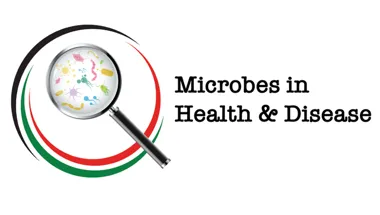
Professor Rivka Isaacson
Professor of Molecular Biophysics
- Graduate School Director, Natural, Mathematical and Engineering Sciences
- Chemistry in Cells Module Lead
Research interests
- Chemistry
Biography
Professor Rivka Isaacson is Professor of Molecular Biophysics in the Department of Chemistry, King’s College London.
Rivka obtained a BSc. in Biochemistry from the University of Manchester in 1997, followed by a Ph.D. in Chemistry from the University of Cambridge in 2001, under the supervision of Professor Sir Alan Fersht, FRS. She carried out post-doctoral research at Harvard Medical School with Professor Pamela Silver, and then at Imperial College London with Professor Steve Matthews. Subsequently, she worked at the Imperial College Drug Discovery Centre before starting her own research group in 2009 funded by an MRC New Investigator Research Grant.
Rivka is passionate about radical interdisciplinarity, conducting many projects across the arts-sciences interface, including an ongoing multimedia collaboration with London Fine Art Studios called Viewing the Invisible and a longstanding relationship with the Iris Murdoch Research Centre at Chichester University around science and literature.
Rivka currently serves on the UKRI Physics of Life steering group and the executive committee for the national Collaborative Computing Project for NMR. She was the 2021 winner of the Judith Howard prize from the Biophysical Sciences Institute at Durham University.
Research Interests
- Control of protein degradation
- Gene expression regulation in bacterial sporulation
- Membrane protein targeting
- Chaperone/Protease systems
- Quality control within the crowded cell
Teaching
- Protein Structure and Function
- Chemistry in Cells
- Molecular Biology in Chemistry
- UG Research Methods Literature Review
- MSci Research Project & Dissertation
- MRes Research Project in Interdisciplinary Chemistry
Research profile
For more information on Professor Isaacson's research please see her Research Portal page
The Isaacson Group
Research Associates:
- Sasha Evans
Postgraduate Researchers:
- Bethany Haynes
- Delia Capatina
- Holly Barter
The Isaacson group uses biophysics techniques, including NMR spectroscopy, X-ray crystallography and cryo-electron microscopy, to probe macromolecular structure and interactions of molecules relevant to health and disease. Their research questions, largely BBSRC funded, focus on mechanisms for maintaining proteostasis within the crowded cell in both mammalian and bacterial systems.
Research

Microbes in Health & Disease
The Microbes in Health & Diseases Research Interest Group aims to foster collaboration across departments and faculties at KCL to explore the multifaceted role microbes play in health and disease.
News
Scientists discover protein key to bacteria's survival in extreme environments
The discovery sheds light on how certain bacteria form spores for survival, enabling superbugs to evade hospital cleaning

King's Chemist joins science greats in prestigious Royal Institution Christmas Lecture
Professor Rivka Isaacson helped reveal the truth about Artificial Intelligence in a three-part special series on BBC 4.

International Women's Day 2021: The contribution of the women at King's to the global response to COVID-19
As part of the UN’s International Women’s Day 2021 theme “Women in leadership: Achieving an equal future in a COVID-19 world”, we recognise the important...

King's chemist Dr Rivka Isaacson shortlisted as Falling Walls finalist
Rivka’s collaboration with the London Fine Arts studio via the 2019 multimedia project Viewing the Invisible has been shortlisted in the Science in the Arts...

Viewing the Invisible offers a fresh approach to thinking about science and art
The exhibition showcased parallels between the two disciplines and enabled a greater understanding of the value of collaborative working.

Viewing the Invisible breaks down boundaries between science and art
An exhibition bringing together science influencers and artists to explore the similarities in their working methods has opened at the Bush House Arcade.

Lecturer receives Supervisory Excellence Award
Dr Rivka Isaacson from the Department of Chemistry, has been awarded the King’s Supervisory Excellence Award for the Faculty of Natural & Mathematical...

Events

Department of Chemistry Seminar: Dr Doryen Bubeck
Senior Lecturer in Structural Biology, Department of Life Sciences, Imperial College London
Please note: this event has passed.
Research

Microbes in Health & Disease
The Microbes in Health & Diseases Research Interest Group aims to foster collaboration across departments and faculties at KCL to explore the multifaceted role microbes play in health and disease.
News
Scientists discover protein key to bacteria's survival in extreme environments
The discovery sheds light on how certain bacteria form spores for survival, enabling superbugs to evade hospital cleaning

King's Chemist joins science greats in prestigious Royal Institution Christmas Lecture
Professor Rivka Isaacson helped reveal the truth about Artificial Intelligence in a three-part special series on BBC 4.

International Women's Day 2021: The contribution of the women at King's to the global response to COVID-19
As part of the UN’s International Women’s Day 2021 theme “Women in leadership: Achieving an equal future in a COVID-19 world”, we recognise the important...

King's chemist Dr Rivka Isaacson shortlisted as Falling Walls finalist
Rivka’s collaboration with the London Fine Arts studio via the 2019 multimedia project Viewing the Invisible has been shortlisted in the Science in the Arts...

Viewing the Invisible offers a fresh approach to thinking about science and art
The exhibition showcased parallels between the two disciplines and enabled a greater understanding of the value of collaborative working.

Viewing the Invisible breaks down boundaries between science and art
An exhibition bringing together science influencers and artists to explore the similarities in their working methods has opened at the Bush House Arcade.

Lecturer receives Supervisory Excellence Award
Dr Rivka Isaacson from the Department of Chemistry, has been awarded the King’s Supervisory Excellence Award for the Faculty of Natural & Mathematical...

Events

Department of Chemistry Seminar: Dr Doryen Bubeck
Senior Lecturer in Structural Biology, Department of Life Sciences, Imperial College London
Please note: this event has passed.
